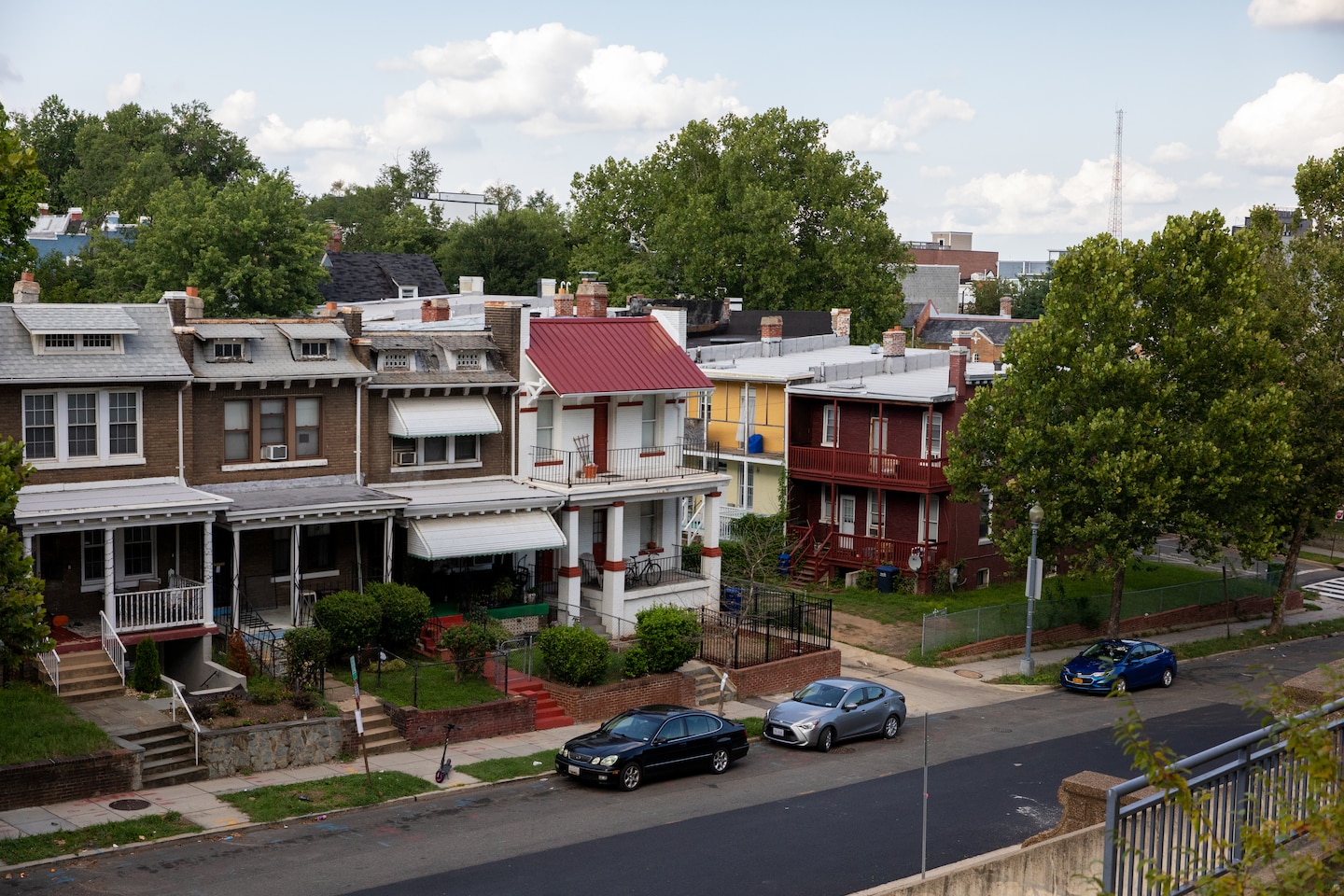In Northeast D.C., Eckington offers an oasis of calm amid commotion of the city

It’s one of D.C.’s oldest neighborhoods. Joseph Gales Jr., mayor of Washington from 1827 to 1830, spent summers and weekends at his country estate “Eckington,” which he named for the village in England where he was born. In 1887, real estate developer George Truesdell purchased the estate and subdivided it into lots for residential development. The Baltimore and Ohio Railroad established its freight yards there, which encouraged the growth of a rich industrial sector, which remains today. Walking the streets along Eckington’s eastern half, passersby can hear the trains roaring by the old warehouses and manufacturing plants. For many residents, the grittiness of Eckington’s industrial past provides a real city feel.
“There’s an asphalt recycling plant and the Amtrak tracks run through here, too, so it has this feel of true urbanity,” says Lauren Ober, who moved to Eckington from nearby Truxton Circle two years ago. “Neighbors are grilling, and lawns are tended nicely at the same time, so it’s an interesting mix. I love hearing the trains go by and whistle at night. There’s something about the energy here that feels very real.”
The industrial atmosphere is confined to the neighborhood’s eastern edge while the rest of Eckington boasts a range of housing options from condos to small and large rowhouses to fixer-uppers to new developments.
Neighborhood amenities include Alethia Tanner Park, which offers a large lawn, playground and dog park and connects to the Metropolitan Branch Trail. The public pool at the Harry Thomas Recreation Center is usually a draw in the summertime but is shuttered because of the pandemic this year. It also has a playground along with basketball and tennis courts.
Eckington was a relatively little-known neighborhood until recent years, when its affordable prices drew buyers priced out of other parts of the city and made gentrification an issue. Jackie Jones has lived in the same townhouse on Todd Place since she was a toddler, inheriting the home from her mother. Jones describes a changing demographic—most families used to stay for the long haul, but many residents now live in new developments for only a couple of years at a time.
“When you pile a lot of people into one area with these high-rises and things, you lose that sense of community. I do think it takes away from that quiet feel here,” Jones says.
Jones’s fears are not lost on new residents. Ben Colbert and his wife moved to the neighborhood less than a year ago. He says that he’s very cognizant of the changing tides but has a great relationship with his more-rooted multigenerational neighbors.
“My block is very diverse,” Colbert said. “Longtime residents have gotten to know the newcomers buying houses, and we’ve all been focused on being friends with each other. There hasn’t been any conflict between old and new, but we’re very mindful of that.”
Still, change continues to come to the neighborhood. Eckington Yards is a planned mixed-use development that will have four residential buildings. Upon completion this year, it will contain 670 residential units and 70,000 square feet of retail space.
Jonathan Blansfield is an Eckington resident and a real estate agent with Eckington Properties, a Long & Foster team focused specifically on buying and selling in the neighborhood. Blansfield is aware of residents’ concerns surrounding development but is confident that plans will be appropriate for the area.
“Becoming the next Shaw or Mount Vernon Triangle, to me, that’s so out of the realm of possibilities,” he said.
Blansfield points to the industrial periphery of Eckington as an inherently nonresidential area that, when redeveloped gradually, will benefit the neighborhood, rather than detract from its character.
“The residential part of the neighborhood is so well protected from the encroachment of large developments,” he said. “They exist where they exist for a reason, but the residential part of Eckington, the heart of Eckington — I don’t foresee that changing. . . . Change is scary for a lot of people, but we don’t want development just to have development. I believe in the promise and uniqueness of Eckington to become one of the most appealing neighborhoods to live in the city.”
Living There: Eckington is bounded by Rhode Island Avenue on the north, North Capitol Street on the west, Florida Avenue and New York Avenue on the south and the train tracks on the east. Blansfield says that in the past 60 days, 21 homes have sold in Eckington, ranging from a one-bedroom, one-bathroom condo that sold for $225,000 to a four-bedroom, four-bathroom renovated rowhouse that sold for just over $1 million. There are 19 homes on the market, which include a two-bedroom, two-bathroom condo listed for $439,000 and a five-bedroom, four-bathroom rowhouse listed for $1.3 million.
Schools: Langley Elementary, McKinley Middle and McKinley Technology High.
Transportation: Eckington is easily accessible to downtown via the main thoroughfares that border the neighborhood. The area is also served by several bus routes and the Rhode Island Avenue-Brentwood Metro station on the Red Line, which is at the northeastern corner of the neighborhood. Many residents use the Metropolitan Branch Trail as a biking and walking route to other areas of the city.






